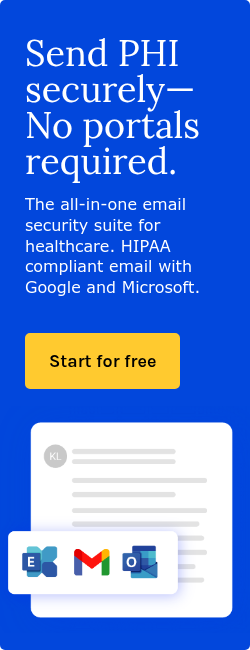
Migrant and refugee populations face overlapping healthcare challenges shaped by displacement, legal status, language barriers, and systemic inequities. These are not just logistical issues; they directly impact access, trust, and outcomes. To support these communities, healthcare providers must offer culturally competent care and outreach and communication systems that are private, accessible, and secure.
HIPAA compliant communication safeguards sensitive health data, supports continuity of care, and allows providers to connect with patients in ways that feel safe and respectful.
Understanding refugee and migrant health
According to the World Health Organization (WHO), “More than 1 billion people are on the move globally, about 1 in 8 of the global population,” including “281 million people [who] are international migrants” and “84 million are forcibly displaced,” comprising “48 million internally displaced, 26.6 million refugees, [and] 4.4 million asylum seekers.” Among these, “35 million are children and 1 million were born into refugee life.” WHO notes that the number of people on the move is expected to grow due to factors including “poverty, lack of security, lack of access to basic services, conflict, environmental degradation and disasters.” Migration can “both improve or diminish an individual’s health status,” but refugees and migrants often “face worse health outcomes in countries of transit and destination” due to barriers like “language and cultural differences, institutional discrimination, and restricted use of health services.” WHO stresses that “social, political and economic exclusion can result in poverty, homelessness and exploitation,” which increases the risk for noncommunicable diseases. The organization also discusses that “the COVID-19 pandemic has exacerbated existing inequalities,” particularly for “refugees and migrants, especially those in irregular situations.” Their physical and mental health needs are “shaped by experiences in their country of origin, their migration journey, their host country’s entry and integration policies, and living and working conditions,” all of which can increase vulnerability to chronic and infectious diseases. Moreover, the pandemic “has disrupted health services, putting people already in vulnerable situations at heightened risk and hampering the ability of health systems to respond to their needs.”
Protecting immigration status as health information
One of the most pressing concerns in migrant healthcare is how to handle immigration status. Many providers are unsure whether this information can be disclosed to government agencies. According to the AMA Journal of Ethics, “Clinicians and health care organizations today may have questions about whether they are allowed or required to release a patient’s immigration status to federal or state governmental authorities. The simple answer is ‘no’ because… a patient’s immigration status can be considered PHI under the HIPAA Privacy Rule.” The article goes on to explain that immigration status is “sufficiently related to health that this information meets the Privacy Rule definition of individually identifiable health information and is therefore PHI.”
Migrants and refugees often delay seeking care out of fear that their information could be shared with immigration enforcement. Reassuring them that their status is protected by law and ensuring that communications happen on secure, HIPAA compliant platforms can make the difference between someone accessing care or avoiding it altogether.
Digital health tools offer opportunity, with limits
Digital health tools have the potential to connect healthcare systems with highly mobile and often underserved populations, but their use must be intentional and ethically sound. As one study in eClinicalMedicine notes, “digital technologies can help support the health of migrants and refugees and facilitate research on their health issues. However, ethical concerns include security and confidentiality of information; informed consent; and how to engage migrants in designing, implementing, and researching digital tools.”
The study states that technical solutions alone can’t fix deeper problems. “Digital technical solutions do not necessarily overcome problems that are political, social, or economic.” Without addressing broader structural inequities, such as restricted mobility, income insecurity, or legal precarity, even the best-designed apps and platforms risk falling short.
The digital divide is widening health disparities
Even when digital solutions are available, many migrants and refugees can’t use them due to a lack of infrastructure or access. The same eClinicalMedicine review points out that for some migrants, “Barriers to their mobile phone usage may include confiscation (whether legal or not) by authorities.” Internet infrastructure may be “unreliable, incapable of handling a high volume, or deliberately denied,” especially in camps or detention centers. The review also describes practical challenges such as “lack of a power supply, costs and documentation requirements associated with SIM cards… access to charging points… and lack of the required documentation to register for a mobile money account.”
During the COVID-19 pandemic, these issues had real-life consequences. “The inability to order food or access sanitary products online left many refugees in precarious situations.” In Germany, poor digital infrastructure in reception centers meant many refugees “were unable to access crucial health information.” In Greece, limited WiFi in camps “severely restricted the ability of refugees to access online health services and essential daily needs.” In Italy, “The lack of affordable mobile data plans” was a major obstacle to accessing health and social services online.
These aren’t just technical hurdles, they are direct threats to health, dignity, and safety. Secure communication platforms must be designed to work in low-resource settings, with multilingual support and minimal hardware requirements, if they’re to make any meaningful impact.
Language support is critical at every stage
Communication gaps are not limited to devices or connectivity. Language barriers continue to be one of the most consistent and damaging obstacles to care. A recent review on mental health services for third-country nationals (TCNs) notes that “both TCNs and healthcare service providers experience similar difficulties reporting/eliciting information and establishing rapport with each other.” While there’s a strong preference for monolingual communication when possible, the reality is that “both sides… have a strong preference for high-quality professional interpretation and translation services.”
Unfortunately, those services are not always available. The review describes “a fragmented landscape of language support options,” with frequent shortages of trained interpreters and little cultural adaptation in care delivery. The report calls for “in-person language and cultural support at different stages of the care-seeking process,” alongside culturally tailored health education and “increased funding for language support services.”
HIPAA compliant messaging platforms with multilingual capability can help bridge part of this gap. They allow care teams to communicate in a patient’s preferred language, offer instructions clearly, and reduce miscommunication. These digital tools should supplement, not replace, direct human support from interpreters and culturally competent staff.
Patient-controlled data and multilingual access
A more ethical, patient-centered model of communication is one where individuals own and control access to their own health information. As noted in eClinicalMedicine, “Adopting a patient-centric approach, in which a patient is the owner of their data and may allow hospitals and health professionals access… requires, in the case of migrants, the potential for multilingual operation of the data.”
This means platforms must be able to deliver care instructions, consent forms, and health updates in the patient’s preferred language. It also requires interfaces that are intuitive and usable regardless of literacy level or technical proficiency. When patients understand and manage their data, they’re more likely to engage meaningfully with their care.
HIPAA compliant communication tools that support multilingual content and secure data sharing are a step toward this vision. They reinforce autonomy and privacy, while allowing for the flexibility migrant patients often need.
Our solution
Migrant and refugee populations face overlapping healthcare barriers from legal precarity and displacement to language and digital access gaps. These aren’t just logistical issues, they directly affect trust, access, and health outcomes. To deliver safe, culturally competent care, providers need communication systems that are secure, respectful, and accessible.
HIPAA compliant communication protects sensitive health data, including immigration status, and ensures patients can engage without fear. Secure messaging platforms like Paubox Email Suite deliver encrypted messages directly to inboxes, no portals or logins required, helping patients receive care updates in a way that feels safe and private.
When language is a barrier, built-in multilingual support becomes beneficial. HIPAA compliant platforms can help healthcare teams deliver instructions, consent forms, and follow-ups in a patient’s preferred language; this reduces miscommunication but empowers patients to better understand and manage their health.
Digital communication tools must also consider the realities of low-resource settings. Many migrants and refugees face limited connectivity, confiscated devices, or a lack of access to power and data. Platforms designed with minimal hardware requirements, offline functionality, and simple user interfaces can help bridge that digital divide without compromising security.
In a care environment where trust is fragile and continuity is often disrupted, HIPAA compliant communication serves as a foundation. It supports ethical, patient-centered care while preserving privacy, enabling coordination, and strengthening provider-patient relationships across borders and barriers.
Learn more: HIPAA Compliant Email: The Definitive Guide
FAQs
What’s the best way to communicate with patients who don’t speak English?
Use a mix of approaches: professional interpreters, multilingual staff, and secure messaging platforms that support multiple languages. Tech helps, but human connection and cultural awareness still matter most.
Are HIPAA compliant platforms really necessary for refugee health communication?
Yes, especially when trust is fragile. Secure platforms help reassure patients that their info, including legal status or medical history, won’t be exposed or misused.
What if patients don’t have regular access to phones or the internet?
Providers may need to get creative. Use communication tools that work with low connectivity or offline modes. It’s also smart to pair digital tools with on-the-ground outreach, print materials, or community liaisons.
How can care teams make health updates easier to understand for patients with low literacy?
Keep messages short and clear. Use simple language, avoid jargon, and whenever possible, add visual aids or audio support. The goal is not just to inform but to empower patients to act on that information.
Subscribe to Paubox Weekly
Every Friday we'll bring you the most important news from Paubox. Our aim is to make you smarter, faster.




